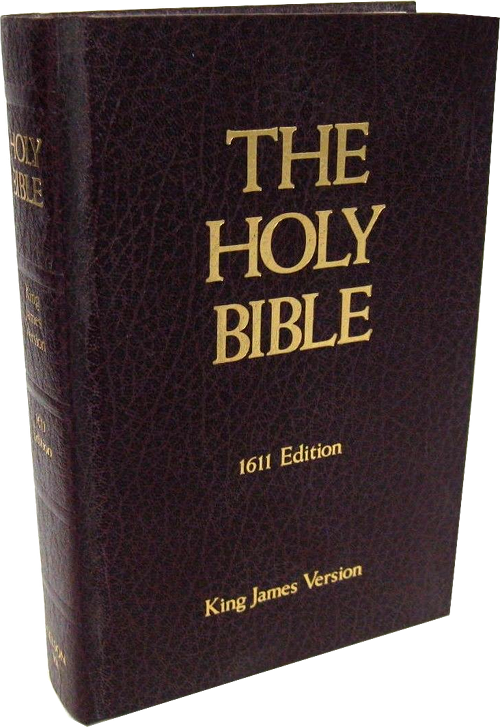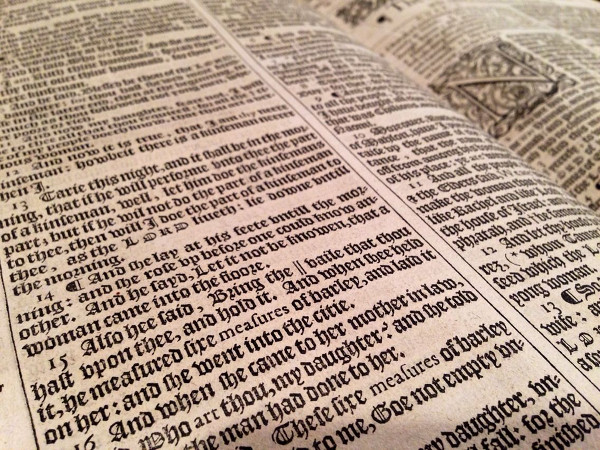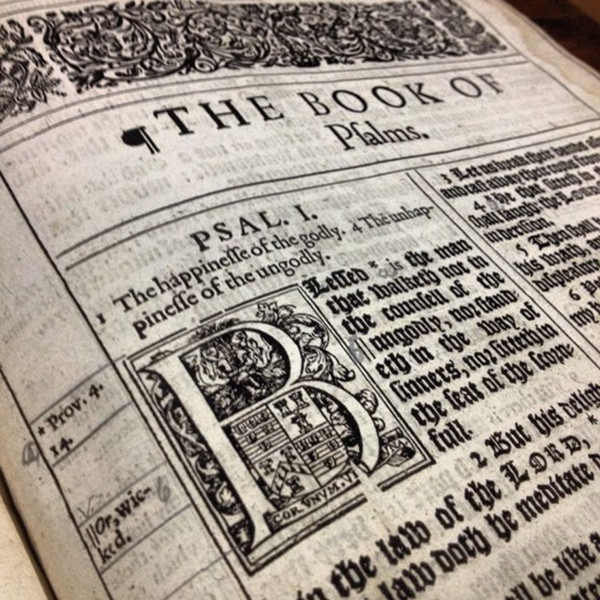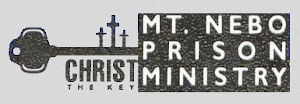A Brief History of the King James Bible
A Brief History of the King James Bible
By Dr. Laurence M. Vance

As the reign of Elizabeth (1558-1603) was coming to a close, we find a draft for an act of Parliament for a new version of the Bible: “An act for the reducing of diversities of bibles now extant in the English tongue to one settled vulgar translated from the original.” The Bishop’s Bible of 1568, although it may have eclipsed the Great Bible, was still rivaled by the Geneva Bible. Nothing ever became of this draft during the reign of Elizabeth, who died in 1603, and was succeeded by James 1, as the throne passed from the Tudors to the Stuarts. James was at that time James VI of Scotland, and had been for thirty-seven years. He was born during the period between the Geneva and the Bishop’s Bible.
One of the first things done by the new king was the calling of the Hampton Court Conference in January of 1604 “for the hearing, and for the determining, things pretended to be amiss in the church.” Here were assembled bishops, clergymen, and professors, along with four Puritan divines, to consider the complaints of the Puritans. Although Bible revision was not on the agenda, the Puritan president of Corpus Christi College, John Reynolds, “moved his Majesty, that there might be a new translation of the Bible, because those which were allowed in the reigns of Henry the eighth, and Edward the sixth, were corrupt and not answerable to the truth of the Original.”
The king rejoined that he:
“Could never yet see a Bible well translated in English; but I think that, of all, that of Geneva is the worst. I wish some special pains were taken for an uniform translation, which should be done by he best learned men in both Universities, then reviewed by the Bishops, presented to the Privy Council, lastly ratified by the Royal authority, to be read in the whole Church, and none other.”
Accordingly, a resolution came forth:
“That a translation be made of the whole Bible, as consonant as can be to the original Hebrew and Greek; and this to be set out and printed, without any marginal notes, and only to be used in all churches of England in time of divine service.”
The next step was the actual selection of the men who were to perform the work. In July of 1604, James wrote to Bishop Bancroft that he had “appointed certain learned men, to the number of four and fifty, for the translating of the Bible.” These men were the best biblical scholars and linguists of their day. In the preface to their completed work it is further stated that “there were many chosen, that were greater in other men’s eyes than in their own, and that sought the truth rather than their own praise. Again, they came or were thought to come to the work, learned, not to learn.” Other men were sought out, according to James, “so that our said intended translation may have the help and furtherance of all our principal learned men within this our kingdom.”

Although fifty-four men were nominated, only forty-seven were known to have taken part in the work of translation. The translators were organized into six groups, and met respectively at Westminster, Cambridge, and Oxford. Ten at Westminster were assigned Genesis through 2 Kings; seven had Romans through Jude. At Cambridge, eight worked on 1 Chronicles through Ecclesiastes, while seven others handled the Apocrypha. Oxford employed seven to translate Isaiah through Malachi; eight occupied themselves with the Gospels, Acts, and Revelation.
Fifteen general rules were advanced for the guidance of the translators:
1. The ordinary Bible read in the Church, commonly called the Bishops Bible, to be followed, and as little altered as the Truth of the original will permit.
2. The names of the Prophets, and the Holy Writers, with the other Names of the Text, to be retained, as nigh as may be, accordingly as they were vulgarly used.
3. The Old Ecclesiastical Words to be kept, viz. the Word Church not to be translated Congregation &c.
4. When a Word hath divers Significations, that to be kept which hath been most commonly used by the most of the Ancient Fathers, being agreeable to the Propriety of the Place, and the Analogy of the Faith.
5. The Division of the Chapters to be altered, either not at all, or as little as may be, if Necessity so require.
6. No Marginal Notes at all to be affixed, but only for the explanation of the Hebrew or Greek Words, which cannot without some circumlocution, so briefly and fitly be expressed in the Text.
7. Such Quotations of Places to be marginally set down as shall serve for the fit Reference of one Scripture to another.
8. Every particular Man of each Company, to take the same Chapter or Chapters, and having translated or amended them severally by himself, where he thinketh good, all to meet together, confer what they have done, and agree for their Parts what shall stand.
9. As any one Company hath dispatched any one Book in this Manner they shall send it to the rest, to be considered of seriously and judiciously, for His Majesty is very careful in this Point.
10. If any Company, upon the Review of the Book so sent, doubt or differ upon any Place, to send them Word thereof; note the Place, and withal send the Reasons, to which if they consent not, the Difference to be compounded at the general Meeting, which is to be of the chief Persons of each Company, at the end of the Work.
11. When any Place of special Obscurity is doubted of, Letters to be directed by Authority, to send to any Learned Man in the Land, for his Judgement of such a Place.
12. Letters to be sent from every Bishop to the rest of his Clergy, admonishing them of this Translation in hand; and to move and charge as many skilful in the Tongues; and having taken pains in that kind, to send his particular Observations to the Company, either at Westminster, Cambridge, or Oxford.
13. The Directors in each Company, to be the Deans of Westminster, and Chester for that Place; and the King’s Professors in the Hebrew or Greek in either University.
14. These translations to be used when they agree better with the Text than the Bishops Bible: Tyndale’s, Matthew’s, Coverdale’s, Whitchurch’s, Geneva.
15. Besides the said Directors before mentioned, three or four of the most Ancient and Grave Divines, in either of the Universities, not employed in Translating, to be assigned by the vice-Chancellor, upon Conference with the rest of the Heads, to be Overseers of the Translations as well Hebrew as Greek, for the better observation of the 4th Rule above specified.

The work began to take shape in 1604 and progressed steadily. The translators expressed their early thoughts in their preface as:
“Truly (good Christian Reader) we never thought from the beginning, that we should need to make a new Translation, nor yet to make of a bad one a good one,…but to make a good one better, or out of many good ones, one principal good one, not justly to be excepted against, that hath been our endeavor.”
They had at their disposal all the previous English translations to which they did not disdain:
“We are so far off from condemning any of their labors that travailed before us in this kind, either in this land or beyond sea, either in King Henry’s time, or King Edward’s…or Queen Elizabeth’s of ever renowned memory, that we acknowledge them to have been raised up of God, for the building and furnishing of his Church, and that they deserve to be had of us and of posterity in everlasting remembrance.”
And, as the translators themselves also acknowledged, they had a multitude of sources from which to draw from: “Neither did we think much to consult the Translators or Commentators, CHaldee, Hebrew, Syrian, Greek, or Latin, no nor the Spanish, French, Italian, or Dutch.” The Greek editions of Erasmus, Stephanus, and Beza were all accessible, as were the COmplutensian and Antwerp Polyglots, and the Latin translations of Pagninus, Termellius, and Beza.
Four years were spent on the preliminary translation by the six groups. The translators were exacting and particular in their work, as related in their preface:
Neither did we disdain to revise that which we had done, and to bring back to the anvil that which we had hammered: but having and using as great helps as were needful, and fearing no reproach for slowness, nor coveting praise for expedition, we have at the length, through the good hand of the Lord upon us, brought the work to that pass that you see.
The conferences of each of the six being ended, nine months were spent at Stationers’ Hall in London for review and revision of the work by two men each from the Westminster, Cambridge, and Oxford companies. The final revision was then completed by Myles Smith and Thomas Bilson, with a preface supplied by Smith.
The completed work was issued in 1611, the complete title page reading:
“THE HOLY BIBLE, Conteyning the Old Testament, and the New: Newly Translated out of the Originall tongues: & with the former Translations diligently compared and revised, by his Majesties Special Commandment. Appointed to be read in Churches. Imprinted at London by Robert Barker, Printer to the Kings most Excellent Majestie. ANNO DOM. 1611.”
The New Testament had a separate title page, the whole of it reading:
“THE NEWE Testament of our Lord and Saviour JESUS CHRIST. Newly Translated out of the Originall Greeke: and with the former Translations diligently compared and revised, by his Majesties speciall Commandment. IMPRINTED at London by Robert Barker, Printer to the Kings most Excellent Majestie. ANNO DOM. 1611. Cum Privilegio.”

The King James Bible was, in its first editions, even larger than the Great Bible. It was printed in black letter with small italicized Roman type to represent those words not in the original languages.
A dedicatory epistle to King James, which also enhanced the completed work, recalled the King’s desire that “there should be one more exact Translation of the Holy Scriptures into the English tongue.” The translators expressed that they were “poor instruments to make GOD’S holy Truth to be yet more and more known” while at the same time recognizing that “Popish persons” sought to keep the people “in ignorance and darkness.”
The Authorized Version, as it came to be called, went through several editions and revisions. Two notable editions were that of 1629, the first ever printed at Cambridge, and that of 1638, also at Cambridge, which was assisted by John Bois and Samuel Ward, two of the original translators. In 1657, the Parliament considered another revision, but it came to naught. The most important editions were those of the 1762 Cambridge revision by Thomas Paris, and the 1769 Oxford revision by Benjamin Blayney. One of the earliest concordances was A Concordance to the Bible of the Last Translation, by John Down-ham, affixed to a printing of 1632.
The Authorized Version eclipsed all previous versions of the Bible. The Geneva Bible was last printed in 1644, but the notes continued to be published with the King James text. Subsequent versions of the Bible were likewise eclipsed, for the Authorized Version was the Bible until the advent of the Revised Version and ensuing modern translations. It is still accepted as such by its defenders, and recognized as so by its detractors. Alexander Geddes (d. 1802), a Roman Catholic priest, who in 1792 issued the first column of his own translation of the Bible, accordingly paid tribute to the Bible of his time:
“The highest eulogiums have been made on the translation of James the First, both by our own writers and by foreigners. And, indeed, if accuracy, fidelity, and the strictest attention to the letter of the text, be supposed to constitute the qualities of an excellent version, this of all versions, must, in general, be accounted the most excellent. Every sentence, every word, every syllable, every letter and point, seem to have been weighed with the nicest exactitude; and expressed, either in the text, or margin, with the greatest precision.”
As to whether the Authorized Version was ever officially “authorized,” Brooke Westcott, one of the members of the committee that produced the Revised Version, and the editor, with Fenton Hort, of an edition of the Greek New Testament, stated that:
From the middle of the seventeenth century, the King’s Bible has been the acknowledged Bible of the English-speaking nations throughout the world simply because it is the best. A revision which embodied the ripe fruits of nearly a century of labour, and appealed to the religious instinct of a great Christian people, gained by its own internal character a vital authority which could never have been secured by any edict of sovereign rulers.
This article was taken from the book A Brief History of English Bible Translations by Dr. Laurence M. Vance.
Dr. Laurence M. Vance’s Publications are available from: Vance Publications





















Leave a Reply
You must be logged in to post a comment.